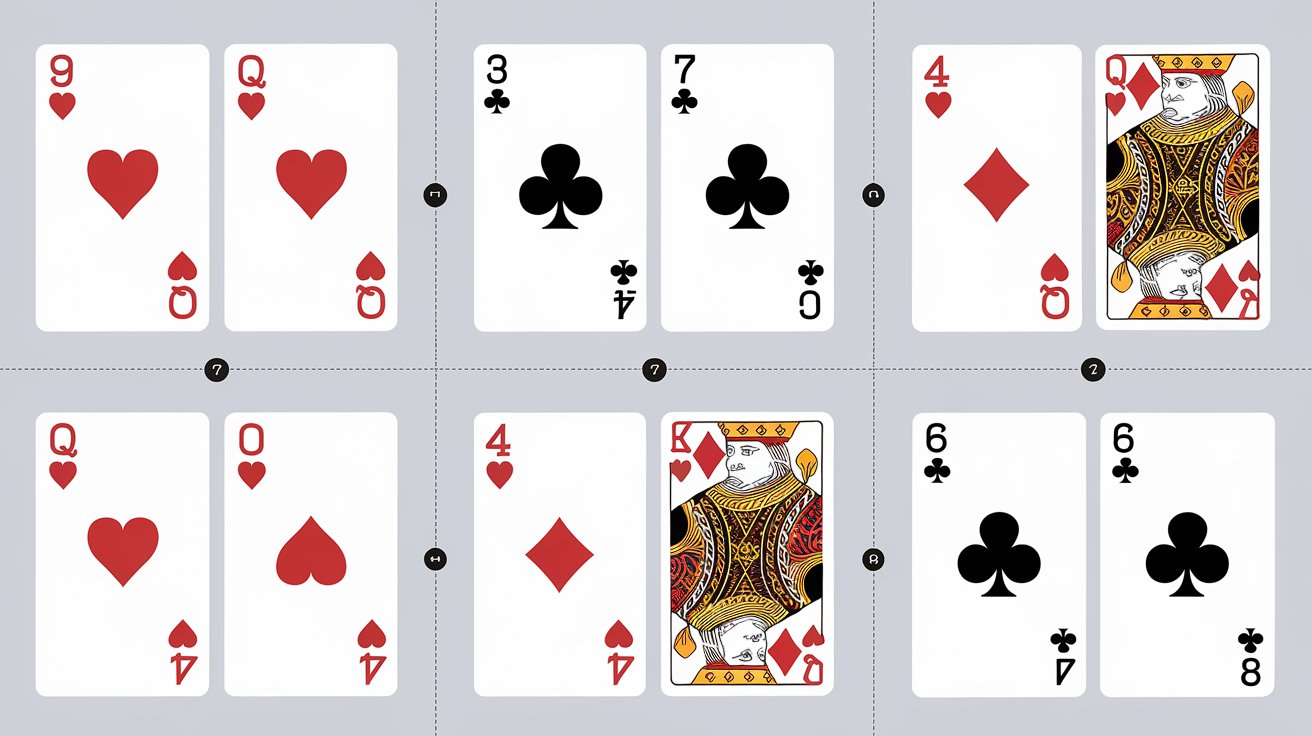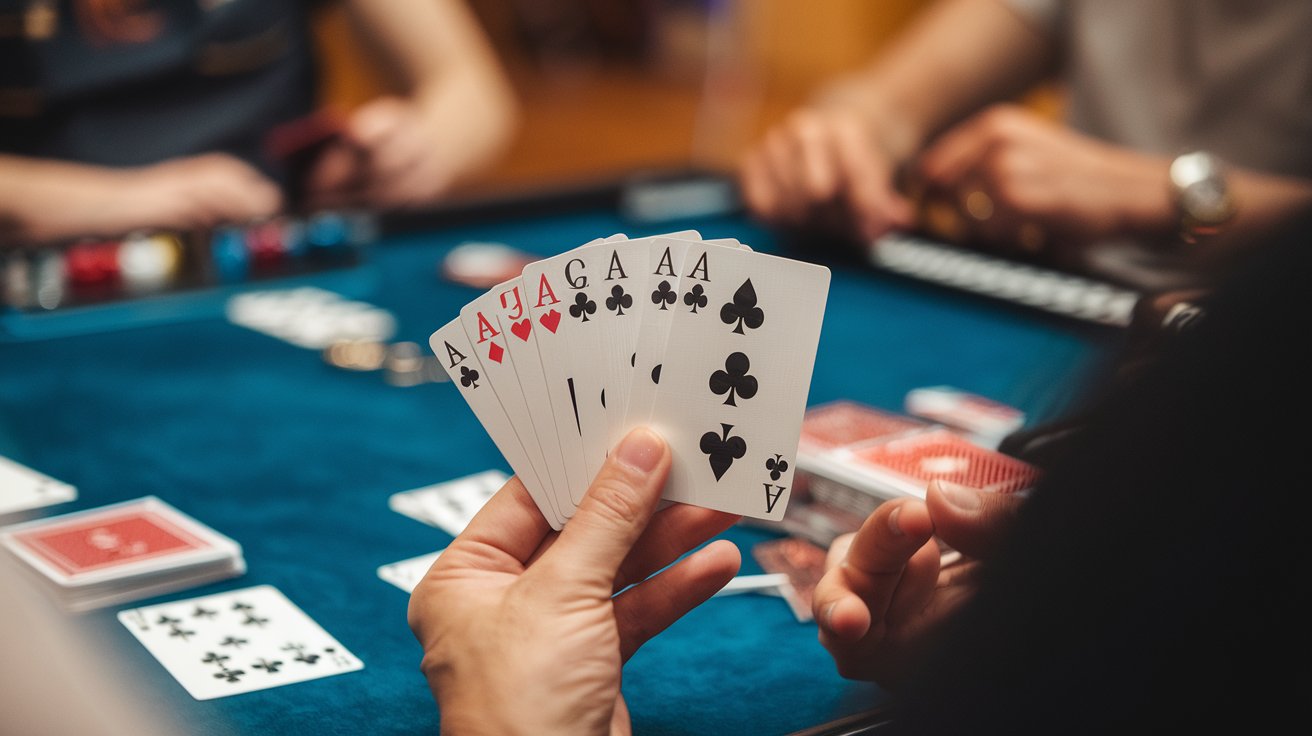Rummy is an exciting and competitive card game that requires a blend of skill, strategy, and sometimes, a bit of luck. However, there are moments in the game when you receive a bad hand—one filled with mismatched cards, no immediate sets or runs, and seemingly no way to win. But don’t worry; a bad hand doesn’t have to spell defeat. In fact, how you handle a bad hand can make a huge difference between a loss and a comeback victory.
In this blog, we’ll dive deep into practical strategies, tips, and mental tactics for handling a bad hand in Rummy. With the right approach, even a poor starting hand can be turned into a winning one.
Understanding Rummy Hands and What Constitutes a “Bad” Hand

In Rummy, each player is dealt a set number of cards (usually 10 or 13, depending on the variation). The objective is to form valid combinations of sets (three or four cards of the same rank) and runs (three or more consecutive cards of the same suit).
A “bad” hand typically refers to a starting hand that has:
- Too many unmatched cards: No immediate sets or runs and lots of cards that don’t fit together.
- High-value cards: Cards like 10s, Jacks, Queens, Kings, and Aces are valuable but can end up as deadwood (useless cards) if they don’t form combinations.
- Lack of flexibility: No cards that are immediately useful for completing a sequence or set.
While these situations may seem discouraging, they are not impossible to overcome. In fact, with the right mindset and strategy, you can work your way out of a bad hand and still come out victorious.
Strategies for Handling a Bad Hand in Rummy
1. Don’t Panic – Stay Calm and Assess Your Hand
The first step in dealing with a bad hand is to remain calm and avoid panicking. A bad hand is just a temporary setback, and Rummy is a game of both skill and chance. Once you receive your hand, take a moment to assess it carefully. Look at all the cards and evaluate whether any potential sets or runs could be formed later in the game.
- Look for any possible combinations: Even a hand that seems completely mismatched at first glance may have some potential. For example, you may not have a completed run or set, but you might have cards that could work together if you draw the right ones.
- Evaluate high-value cards: High cards can be risky in a bad hand because they are harder to combine into runs and sets. But you can use them strategically as you continue to draw cards and observe the discards.
2. Play More Defensively

When you’re stuck with a bad hand, adopting a more defensive playstyle is essential. Instead of aggressively trying to form a combination, focus on keeping your options open and minimizing your losses.
- Don’t discard high-value cards too early: High-value cards are valuable if you can complete a set or run with them, but if discarded too early, they could come back to haunt you. Hold onto them as long as possible or discard them carefully.
- Avoid giving away useful cards: Keep an eye on the cards your opponents are discarding. If they seem to be forming a run or set, avoid discarding cards that could help them complete their combinations. Discard cards that are not likely to be useful to anyone.
- Control the pace: If you’re struggling to form combinations, you can slow down the game by discarding cards that limit your opponents’ choices. This strategy prevents your opponents from completing their hands too quickly and buys you more time to work on yours.
3. Focus on Building Runs and Sets Gradually
In Rummy, a bad hand can often be transformed by focusing on building runs and sets gradually, step-by-step. Here’s how you can go about it:
- Start with the cards you have: Examine the suits and ranks in your hand. If you have cards of the same suit but no sequence yet, start building a potential run. For example, if you have 5♠, 7♠, and 9♠, you’re only missing 6♠ and 8♠ to complete a run. Keep an eye on these missing cards and try to draw or pick them up.
- Use wild cards and jokers: If you have a joker or wild card, it can be a great asset in completing a run or set. Use them strategically to substitute for missing cards and form a valid combination.
- Don’t be too fixated on a single combination: In a bad hand, you might not be able to complete your preferred combinations. Instead, try to form multiple runs or sets simultaneously by keeping your options open. This increases your chances of completing your hand.
4. Make Smart Discards
When you have a bad hand, smart discarding is critical. The goal is to discard cards that are not helpful to your hand and are unlikely to form combinations in the future. Here’s how to do it:
- Discard isolated cards: If you have cards that are isolated and cannot form a set or run, discard them early to minimize your deadwood. For example, cards like 2♠, 5♣, and 9♥ are less likely to help you form a combination compared to cards that are part of a suit or rank sequence.
- Avoid discarding cards that might help your opponent: Be cautious about what you discard, especially if you see that your opponent is working on a sequence or set. Discarding cards that can help your opponent will only increase their chances of completing their hand before you.
- Discard high-value cards cautiously: High-value cards (Jacks, Queens, Kings, etc.) are risky if you can’t use them in combinations. However, be strategic about discarding them, as doing so too early may leave you with fewer options. In the early stages of the game, you can hold onto them for a while, hoping to complete a combination later.
5. Adapt to the Changing Game Dynamics

As you play through the game, the dynamics will change based on the cards being drawn and discarded. A bad hand is not a static state; it can evolve as the game progresses. Here’s how to stay flexible:
- Watch for opportunities: As cards are drawn and discarded, pay attention to what’s happening in the game. If you notice that a particular suit or rank is being discarded frequently, it might indicate that you should hold onto those cards or target them for your own set or run.
- Shift your strategy as needed: If your initial strategy isn’t working and you’re not drawing the cards you need, consider adjusting your approach. Sometimes, shifting from building one particular set or run to forming multiple smaller ones can improve your hand.
- Don’t be afraid to change your focus: If a specific set or run isn’t coming together, don’t be afraid to let go of your original idea and focus on a new combination that seems more achievable.
6. Use Bluffing to Your Advantage
Bluffing is a subtle and powerful tactic in Rummy. If you’re playing against opponents who are paying close attention to your moves, bluffing can help throw them off track and buy you valuable time. For instance, you might hold onto cards that appear to complete a run but don’t, in order to mislead your opponents into thinking you are close to winning.
However, use this tactic sparingly, as experienced players will recognize when you’re bluffing, especially if your discards don’t make sense.
7. Consider the Endgame and How to Minimize Points
If you’re in a situation where you can’t form a winning hand but still want to minimize the points you lose, it’s time to think defensively about the endgame. In many variations of Rummy, the goal isn’t just to win but also to avoid accumulating too many points when another player declares.
- Minimize deadwood: The key to minimizing points in a bad hand is reducing deadwood. Keep the value of your unmatched cards as low as possible. If you’re holding onto high cards (like Kings, Queens, or Jacks) without forming a set or run, try to discard them before your opponent declares.
- Monitor your opponents: In the endgame, it’s essential to keep track of how close your opponents are to completing their hands. If you know they’re about to declare, try to hold onto cards that will lower the points you lose if they do. The goal is to avoid being caught with high-value cards when someone goes out.
Conclusion: Turning a Bad Hand into a Winning Strategy
While a bad hand in Rummy can feel discouraging, it doesn’t have to end in defeat. By following the strategies and tips outlined in this blog—staying calm, playing defensively, building sets and runs gradually, making smart discards, and adapting to the flow of the game—you can increase your chances of turning a bad hand into a winning one. Rummy is a dynamic game, and the key to success lies in being able to adapt and strategize, even when things seem less than ideal.
Next time you’re faced with a bad hand, remember that it’s not the end of the road—it’s just the beginning of your strategic comeback! Keep these tips in mind, and you’ll find yourself handling bad hands like a pro in no time.

Zareb Saleh is a journalist at Gulf Today and a ghostwriter for Gameoholic, specializing in gaming, technology, and digital culture. With a keen eye for industry trends, he delivers insightful stories that engage and inform readers.




